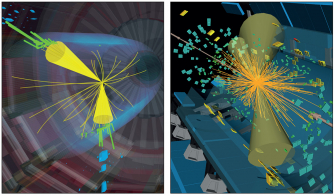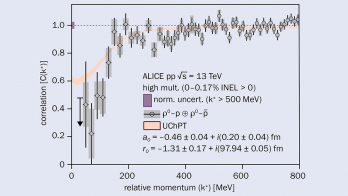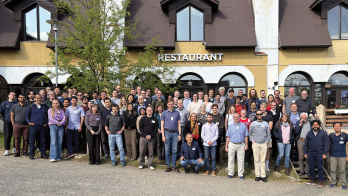The Hadron Structure 2002 conference covered topics ranging from spin studies to relativistic nuclear physics, as Dusan Bruncko and Jozef Urbán report.
The old spa area of Herlany in Slovakia welcomed more than 50 physicists from over 30 countries last September for the 2002 Hadron Structure conference, which took place in the Educational Centre of the Technical University. The area is famous for its cold-water geyser, which is unique in Europe, and which did not disappoint as it erupted four times during the conference. Nor did the conference itself disappoint, with its mix of theoretical talks and experimental reviews.

The Hadron Structure conferences, which have become one of the major events in the Slovak high-energy physics community, are based on a tradition of more than 30 years. The origins of the conferences can be traced back to the late 1960s, when informal meetings of theoreticians from Bratislava, Budapest and Vienna – the so-called Triangle Meetings – were organized three to six times a year and moved between the different locations. The meetings held in Slovakia were called the Hadron Structure meetings and they gradually developed into a series of conferences.
Although the Triangle Meetings were predominantly devoted to theoretical topics, at Hadron Structure 2002 the theoretical reports were balanced by impressive experimental review talks. The following is only a brief report of the scientific programme, which involved a wide range of high- and medium-energy particle physics and heavy-ion physics.
The LEP experiments presented reports on W boson physics, Higgs boson mass limits, and on the searches for neutralinos and large extra dimensions, as well as electroweak, heavy flavour and QCD measurements at LEP. The results are in good agreement with the Standard Model expectations. The H1 and ZEUS experiments at HERA reviewed results on proton structure functions, inclusive diffraction measurements, open charm and beauty, as well as vector meson production. The beauty results seem in general to be above perturbative QCD predictions. Recent spin physics results from HERMES, as well as the latest results from the HERA-B experiment, were also presented.
In B physics, the two dedicated spectrometers BaBar and Belle presented their results on CP violation in B0 decays, the B0 lifetime and branching fractions. Their measurements of the unitary triangle angle ß are found to be consistent with the expectations of the Standard Model and can be used to constrain extensions of the model.
Moving on to heavy-ion collisions at RHIC, in Brookhaven, the STAR collaboration reported results on transverse momentum distributions, hadronic yields and correlations. The azimuthal correlations at moderately high transverse momenta demonstrate the existence of hard scattering processes at RHIC, while the disappearance of di-jets and the suppression of single inclusive particle production are consistent with the jet-quenching scenario. PHENIX presented results on high-pt charged-particle azimuthal correlations, which may indicate a novel particle production mechanism.
In relativistic nuclear physics, selected problems studied at the Veksler and Baldin Laboratory of High Energies at JINR, Dubna, were reported. These studies make use of the Synchrofasotron Nuclotron acceleration system. A plan to upgrade the Nuclotron and organize a user centre for relativistic nuclear physics and applied research with ions of a few GeV energy is foreseen.
Two review talks at the conference were presented on behalf of the ATLAS collaboration. One of these concerned the overall detector concept, the status of the subsystems and the magnet. The second talk was an overview of the ATLAS physics potential for searches at the LHC for the Higgs boson(s), supersymmetric particles, quark and lepton compositeness, new gauge bosons and extra dimensions.
The conference was organized by the Nuclear Physics Department in the Faculty of Sciences at P J Safárik University in Kosice, in association with the Department of Subnuclear Physics, Institute of Experimental Physics, Slovak Academy of Sciences, Kosice, the Physics Institute, Slovak Academy of Sciences, Bratislava, the Faculty of Mathematics, Physics and Informatics, Comenius University, Bratislava, and the Physics Department, Faculty of Electrical Engineering and Informatics, Technical University, Kosice.








